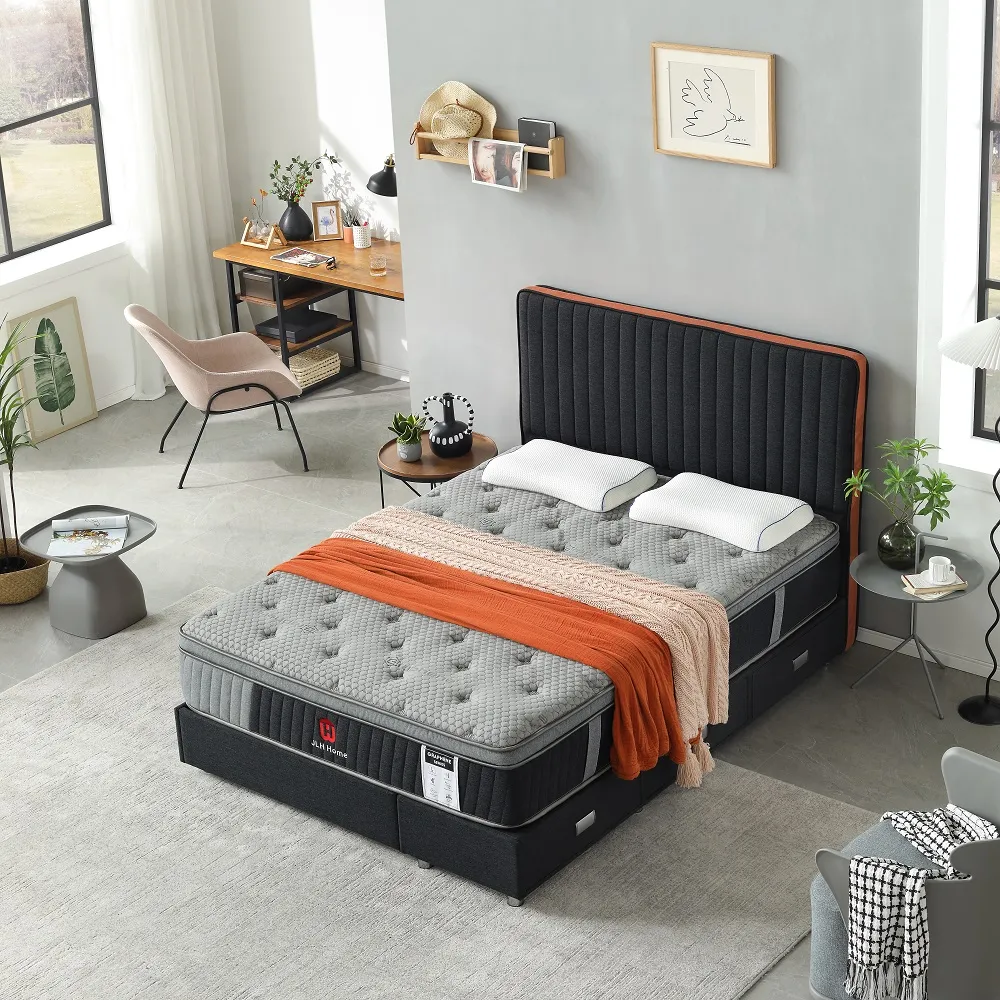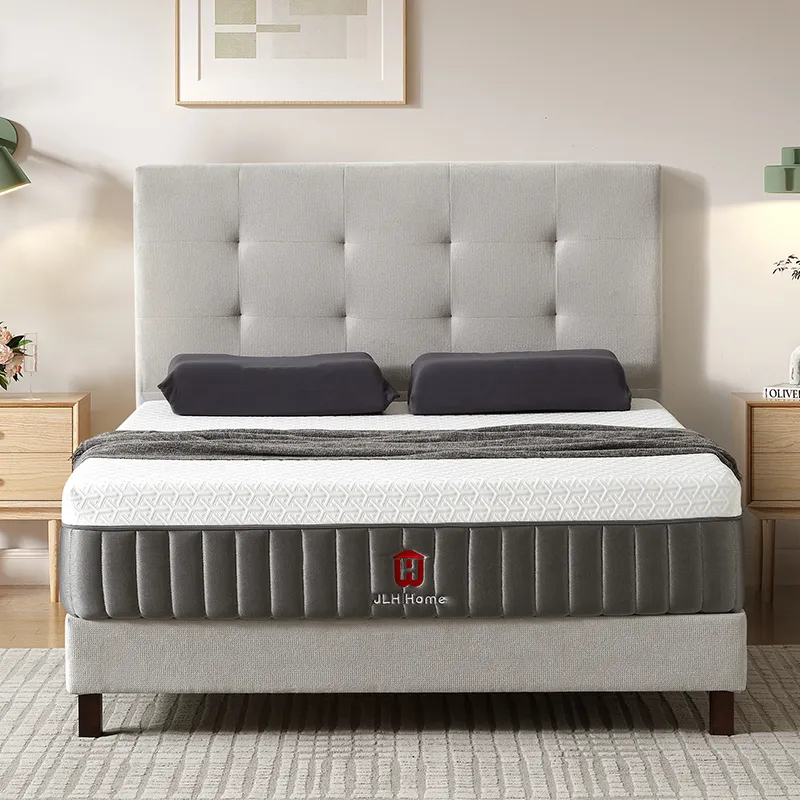Spring Mattress Vs. Memory Foam Mattress: Which Is Right For You?
Choosing the right mattress is a crucial decision that significantly impacts your sleep quality and overall well-being. With countless options available, it can be difficult to know where to start. This guide provides a clear comparison of two popular mattress types: spring and memory foam.
We'll explore the unique benefits and drawbacks of each, equipping you with the knowledge to make an informed decision.
A Closer Look At Spring And Memory Foam
Investing in a new mattress is a significant decision that directly impacts your sleep quality and overall well-being. To make an informed choice, it's essential to understand the key components that differentiate spring mattresses from memory foam. Let's delve into the construction of each type.
Spring Mattresses: Understanding the Traditional Coil System
Spring mattresses, also known as innerspring mattresses, are built upon a foundation of coiled metal springs. These springs provide the support and resilience that define this classic mattress type.
However, the springs themselves are only one part of the equation. Comfort layers, typically composed of materials like foam, latex, or wool, are added on top of the coils to enhance cushioning and contouring.
● Coil Variations: Spring mattresses utilize different types of coils, including pocket coils (individually encased for minimal motion transfer) and continuous coils (interconnected for a firmer feel). The type of coil significantly influences the mattress's overall feel and performance.
● Gauge Considerations: The thickness of the coils, referred to as the gauge, plays a crucial role in determining the firmness and support level. A lower gauge number indicates a thicker coil and a firmer mattress.
Memory Foam Mattresses: Adapting to Your Unique Shape
Memory foam mattresses are distinguished by their ability to conform to the unique contours of your body. This viscoelastic material responds to body heat and pressure, creating a personalized cradle for optimal comfort and pressure relief.
Unlike the buoyant feel of a spring mattress, memory foam provides a gentle sinking sensation that many find both soothing and supportive.
● Density and Durability: The density of the memory foam directly influences its feel, support, and durability. Higher-density foams generally offer greater longevity and support.
● Layered Construction: Many memory foam mattresses incorporate multiple layers with varying densities to achieve a balanced sleep experience. Some may also include cooling gels or other materials to address heat retention, a common concern with memory foam.
Comfort And Support: Finding Your Sleep Sweet Spot
Now that we've peeked under the hood of spring and memory foam mattresses, let's explore how their unique constructions translate into real-world comfort and support.
Spring Mattresses: A Bouncy and Responsive Feel
Spring mattresses are known for their buoyant and responsive feel. The coils provide a traditional "push-back" sensation that many sleepers find familiar and comfortable.
● Sleep Position Considerations: Spring mattresses can be a suitable choice for a variety of sleep positions. Those who sleep on their stomachs or backs often appreciate the firm support and lift provided by innerspring systems. Side sleepers may require a thicker comfort layer to ensure proper pressure relief at the hips and shoulders.
● Motion Isolation: Traditional spring mattresses with interconnected coils can have poor motion isolation, meaning you'll feel your partner's movements throughout the night. However, pocket coil systems significantly minimize motion transfer, making them a better choice for couples.
Memory Foam Mattresses: Contouring Comfort and Pressure Relief
Memory foam mattresses excel at providing pressure relief and personalized support. The foam gently conforms to your body, distributing your weight evenly and reducing pressure points.
● Sleep Position Benefits: Memory foam can be particularly beneficial for side sleepers, as it cushions the shoulders and hips, promoting proper spinal alignment. Back sleepers also often find the cradling sensation of memory foam to be quite comfortable. Stomach sleepers, however, may find that some memory foam mattresses sink too deeply, leading to discomfort and potential back pain.
● Motion Isolation Superstar: Memory foam is a champion of motion isolation. Its ability to absorb movement makes it an excellent choice for couples who share a bed.
Durability And Longevity: Investing In Long-Term Sleep
A good mattress is an investment in your sleep and overall well-being. But how long can you expect your chosen mattress to last? Let's examine the durability and longevity of spring and memory foam options.
Spring Mattresses: A Classic with Varying Lifespans
The lifespan of a spring mattress can vary significantly depending on factors like coil quality, gauge, and the materials used in the comfort layers.
● Average Lifespan: On average, a well-maintained spring mattress can last anywhere from 5 to 10 years. However, higher-quality innerspring mattresses with durable coils and supportive comfort layers may last even longer.
● Signs of Wear and Tear: Sagging, squeaking, and noticeable indentations are common indicators that your spring mattress may be nearing the end of its life.
Memory Foam Mattresses: Resilience and Potential for Body Impressions
Memory foam mattresses are known for their resilience and ability to bounce back after compression. However, they are not immune to wear and tear.
● Average Lifespan: A quality memory foam mattress can typically last 7 to 10 years, sometimes even longer with proper care.
● Body Impressions: It's not uncommon for memory foam mattresses to develop slight body impressions over time. These are generally considered normal and don't necessarily indicate a defective mattress. However, deep or persistent indentations may be a sign of a quality issue.
Price And Value: Finding The Sweet Spot For Your Budget
Mattress prices can range dramatically, from budget-friendly options to luxury models with hefty price tags. Let's break down the typical price ranges for spring and memory foam mattresses and explore how to find the best value for your money.
Spring Mattresses: A Wide Range of Price Points
Spring mattresses generally offer a wider range of price points than memory foam. You can find basic innerspring models at very affordable prices, while high-end options with advanced coil systems and premium comfort layers can be quite expensive.
● Budget-Friendly Options: Basic spring mattresses are often the most affordable entry point into the mattress market.
● Luxury Choices: Spring mattresses with features like pocketed coils, zoned support systems, and natural latex comfort layers can command higher prices.
Memory Foam Mattresses: Balancing Quality and Cost
Memory foam mattresses typically fall within a mid-range to higher price bracket. The cost is often influenced by factors like foam density, layer construction, and added features like cooling gels or infused materials.
● Value Considerations: While memory foam mattresses may have a higher initial cost than some basic spring mattresses, their superior pressure relief and motion isolation can offer excellent long-term value.
● Direct-to-Consumer Options: Many online mattress brands offer high-quality memory foam mattresses at competitive prices by cutting out the middleman and selling directly to consumers.
Other Considerations
While comfort, support, and price are key factors in choosing a mattress, there are several other important considerations to keep in mind. Let's explore some additional factors that can influence your decision.
Temperature Regulation: Staying Cool and Comfortable
● Spring Mattresses: Spring mattresses generally offer better breathability than memory foam due to their open coil structure. This can be a significant advantage for those who tend to sleep hot.
● Memory Foam Mattresses: Memory foam has a reputation for trapping heat. However, many modern memory foam mattresses incorporate cooling gels, breathable covers, or other technologies to address this concern.
Motion Isolation: Minimizing Sleep Disruptions
● Spring Mattresses: Traditional innerspring mattresses with interconnected coils can transmit motion easily, potentially disrupting your partner's sleep. Pocket coil systems offer significantly better motion isolation.
● Memory Foam Mattresses: Memory foam excels at absorbing motion, making it an ideal choice for couples who share a bed.
Edge Support: Maximizing Usable Sleep Surface
● Spring Mattresses: Spring mattresses typically provide good edge support, allowing you to utilize the entire sleep surface without feeling like you're going to roll off.
● Memory Foam Mattresses: Edge support can be a weakness for some memory foam mattresses, particularly those with lower-density foams. However, many manufacturers reinforce the edges to improve support.
Maintenance and Care: Keeping Your Mattress Fresh
● Spring Mattresses: Spring mattresses generally require less maintenance than memory foam. Regular vacuuming and occasional spot cleaning are usually sufficient.
● Memory Foam Mattresses: Memory foam mattresses may require more careful cleaning to prevent moisture buildup. Using a mattress protector and following the manufacturer's care instructions is essential.
Choosing Your Perfect Match: Spring Vs. Memory Foam
Choosing between a spring mattress and a memory foam mattress ultimately comes down to your individual needs and preferences. There's no single "best" option, but by carefully considering the factors we've discussed, you can confidently select the mattress that will provide you with years of restful sleep.
Here's a quick recap to help you make your decision:
● Spring Mattresses: Offer a traditional bouncy feel, good breathability, and a wide range of price points. Ideal for those who prefer a firmer sleep surface or sleep on their stomachs.
● Memory Foam Mattresses: Excel at pressure relief, motion isolation, and contouring comfort. A great choice for side sleepers and couples.
Still unsure? Consider visiting a mattress store to try out different options in person. Pay attention to how each mattress feels for your preferred sleep position and whether it adequately supports your spine.
Don't underestimate the importance of a good night's sleep. Investing in the right mattress is an investment in your health and well-being. With the information you've gained from this guide, you're well-equipped to make a decision that will lead to years of restful slumber. Sweet dreams. Welcome contact JLH Mattress FOR your suitable mattresses.


The professional Wholesale Custom mattress manufacturers in China. JLH Mattress aims to bring the sweet dream to the world.
QUICK LINKS
CONTACT US
Email: kelly@jlhmattress.cn
WhatsApp: +86 13690225203
Fax: +86-757-86905980
Address:10th Floor, Building A, No. 81, Tanxi Section, Beihua Road, Tanxi, Longjiang, Shunde, Foshan City, Guangdong Province, China
FEEL TREE TO CONTACT US
JLH Mattress is confident to say that our custom mattress service is outsatnding.















